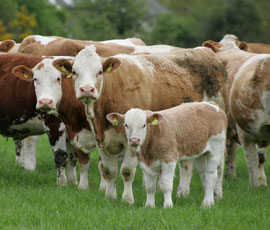NFU beef report urges collaboration

A new report outlining a vision for the British beef industry in the future, with key challenges for every part of the supply chain, is set to be launched by the NFU at this year’s Livestock Event 2012. The report, Bullish Prospects – A vision for the beef industry, tasks the supply chain with working together to ensure everyone achieves a fair return on investment. A number of measures are outlined for each part of the chain – processors, retailers, farmers and levy bodies – in a bid to ensure the vision of a “profitable, market driven, internationally competitive and sustainable beef industry in the UK” is achieved. Advice issued for farmers includes: NFU chief livestock advisor Peter Garbutt said the report had been developed to highlight the challenges that need to be overcome to achieve this vision for the future. “We are one industry and everyone relies on farmers being there doing the job of converting grass into beef – without them in the middle everyone will suffer so we need to work together,” he said. “The farmer action is down to doing what farmers already do. It’s looking at what the market requires, producing to what it requires and trying to capture as much of the returns the market offers into profit – that’s massively challenging.” Although there is a wide range of costs of production across enterprises, as highlighted in EBLEX figures, there is scope for improvement, he added. “There is big pressure on farmers in terms of cost of production and the price of stock is very expensive – access to equity is an issue. It would be worth everybody else in the chain looking at how they can help; it’s about communicating market requirements and the limitations for farmers.” Visit our dedicated Livestock 2012 page
More on this topic
